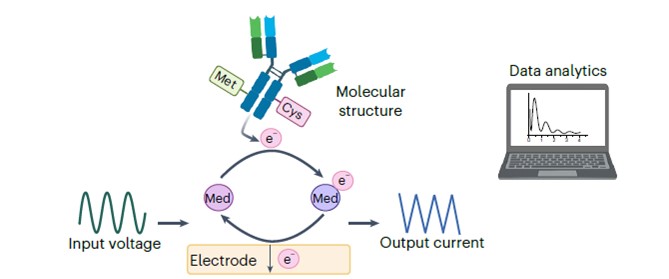Breakthrough Rapid Detection Method for Monoclonal Antibody Redox Modifications Published in Nature Chemical Biology
Thu, Dec 19, 2024
Monoclonal antibodies (mAbs) represent the largest class of the growing therapeutic protein market. The structure and function, and therefore the safety and efficacy, of these molecules can be affected by reduction-oxidation (redox)-based chemical modifications such as interchain disulfide bond reduction and methionine oxidation. In manufacturing, new analytical technologies are needed in the process analytical space to monitor redox-based modifications that can provide rapid, sensitive feedback for control strategies. To this end, UMD, NIST, FDA and IBBR researchers recently published their work towards the development of a rapid method to detect features of protein structure through mediator-accessible redox activities (MARA) in Nature Chemical Biology (https://www.nature.com/articles/s41589-024-01778-z). The study describes the use of mediated electrochemical probing (MEP) to detect mAb reduction and oxidation variants using simple, inexpensive and miniaturizable electrodes that can provide near-real-time information on the status of the molecule. Having this information almost instantly available during production would contribute to overall control strategy for ensuring drug product quality.

